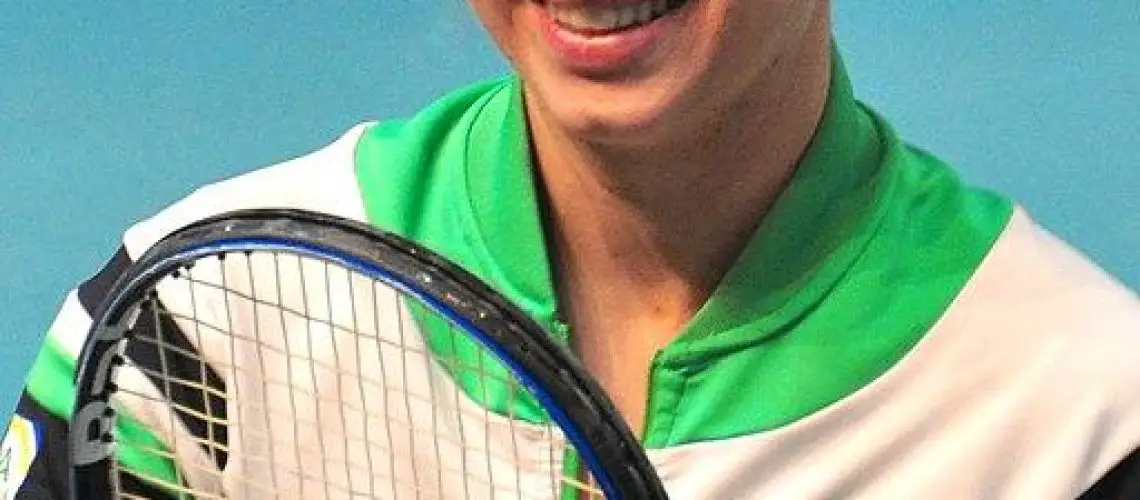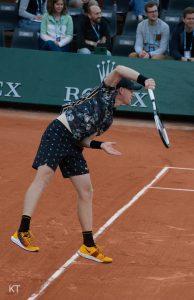We may earn money or products from the companies mentioned in this post.
Brief Overview of Tennis Court Dimensions and Importance
Tennis, a sport loved by millions around the world, is played on specially designed tennis courts These courts have specific dimensions that are crucial for maintaining fairness and ensuring a level playing field Understanding the dimensions of a tennis court is not only important for players but also for those involved in planning and maintaining these sporting facilities
Importance of Understanding Square Footage
When it comes to tennis court dimensions, square footage plays a vital role in several aspects Whether you’re a player, coach, facility manager, or even an architect designing new courts, having a solid grasp of square footage is essential
1 Planning:
For architects and builders tasked with constructing new tennis courts or renovating existing ones, understanding square footage enables them to accurately allocate space From deciding on court placement within a larger complex to determining the required land area, having precise measurements ensures that every element fits harmoniously into the overall design
2 Player Experience:
Square footage directly impacts players’ experience on the court The size of the playing area affects their movement and shot selection during matches Knowing the exact measurements helps players adapt their strategies accordingly and make better-informed decisions during gameplay
3 Maintenance:
Maintaining a tennis court involves regular upkeep to ensure its longevity and optimal performance Knowledge of square footage allows facility managers to determine how much surface area needs cleaning, painting, or resurfacing It also helps in calculating material requirements such as paint, clay or synthetic turf for resurfacing projects
4 Tournament Regulations:
In competitive tennis tournaments, adherence to standard dimensions is crucial for fairness Tournament organizers must ensure that all courts meet the prescribed square footage requirements to maintain uniformity and provide a level playing field for participants
5 Safety Considerations:
Understanding square footage is also essential from a safety perspective The dimensions of the court impact factors such as distance between players, obstacles, and clearance areas This knowledge helps prevent accidents and ensures player safety during matches
In conclusion, an understanding of tennis court dimensions and square footage is vital for various stakeholders involved in the sport From planning and construction to gameplay strategy and maintenance, accurate measurements contribute to the overall success of tennis facilities while promoting fairness and optimum performance on the court
Standard Tennis Court Dimensions

Singles Court vs Doubles Court Dimensions
When it comes to tennis court dimensions, there are some key differences between singles and doubles courts Let’s take a closer look:
-
Length and width differences:
In singles matches, the court is 78 feet long and 27 feet wide However, for doubles matches, the court is slightly wider at 36 feet wide The length remains the same for both -
Total playing area:
The total playing area of a singles court is smaller compared to a doubles court due to its narrower width This difference in size can have an impact on gameplay strategies and shot selection
Regulation Sizes for International Competitions (ITF, ATP, WTA)
The International Tennis Federation (ITF), along with the Association of Tennis Professionals (ATP) and Women’s Tennis Association (WTA), set guidelines for regulation tennis court sizes Here are the standard dimensions:
-
ITF guidelines:
According to ITF regulations, both singles and doubles courts should have a length of 78 feet and a width of 27 feet -
Grand Slam court sizes:
Grand Slam tournaments, such as Wimbledon or the US Open, also follow ITF guidelines for their court dimensions These prestigious events maintain the same dimensions of a standard tennis court: 78 feet in length and 27 feet in width
Tennis players competing in international tournaments must be familiar with these standard regulations to ensure fair play across all venues
Calculating the Square Footage of a Tennis Court

When it comes to calculating the square footage of a tennis court, it’s important to have the right formula at your fingertips The formula is quite simple: you multiply the length of the court by its width This straightforward calculation will give you an accurate measurement of how much space is covered by the court
How to Measure Length and Width Accurately
To ensure precise measurements, it’s crucial to measure both the length and width of the tennis court accurately Start with measuring the length, which runs parallel to the net Make sure your measuring tape is straight and taut from end to end, capturing every inch or foot accurately Repeat this process for measuring the width, which spans from one sideline to another
Example Calculations for Different Types of Courts

Singles Court – Regular Size
A regular singles tennis court measures 78 feet in length and 27 feet in width By applying our trusty formula (length x width), we find that a standard singles court has a total square footage of 2,106 square feet
Doubles Court – Regular Size
A standard doubles tennis court is wider than a singles court, with a width of 36 feet However, it shares the same length as a singles court at 78 feet Using our trusty formula once again, we calculate that a doubles court occupies approximately 2,808 square feet
Custom-Sized or Non-Regulation Courts
In some cases, you may encounter custom-sized or non-regulation tennis courts that do not conform to standard dimensions To determine their square footage, simply apply the formula mentioned earlier—multiply length by width—and you’ll have an accurate measurement of the court’s space
Calculating the square footage of a tennis court is essential for various purposes, such as planning court layouts, estimating material requirements for resurfacing projects, or even determining property values By understanding the formula and measuring accurately, you’ll be equipped to calculate the square footage of any tennis court with ease
Factors Influencing Tennis Court Square Footage

When it comes to designing a tennis court, there are several factors that influence the required square footage One of the key considerations is the impact of additional spaces, such as run-off areas and fencing, on the overall square footage requirements
The Impact of Additional Spaces on Overall Square Footage Requirements
Creating a safe and enjoyable environment for players is paramount in tennis court design That’s why it’s important to allocate sufficient space for run-off areas and fencing around the court
Recommended Space Allowances Based on Player Skill Level and Safety Concerns:
The skill level of players using the court plays a significant role in determining the required space allowance For beginners or recreational players, wider run-off areas are recommended to account for their limited control over ball trajectory On the other hand, professional or advanced players may require narrower run-off areas due to their higher level of precision
In terms of safety concerns, it’s crucial to provide ample space between the playing area and any surrounding obstacles or structures This reduces the risk of collisions with walls, fences, or other objects during intense gameplay
The Role of Surface Material in Determining Square Footage Needs
Another factor that influences tennis court square footage is the choice of surface material Different materials have varying space implications due to their unique characteristics and maintenance requirements
Clay Courts vs Hard Courts vs Grass Courts: Space Implications:
A clay court typically requires more square footage compared to hard courts or grass courts This is because clay surfaces need additional space for proper maintenance, including watering and rolling Additionally, clay courts tend to have a larger margin beyond the baseline due to their slower playing speed
Hard courts, on the other hand, generally have more precise dimensions and require less space overall Their solid surface allows for efficient ball bounce and consistent playing conditions without the need for extensive maintenance
Grass courts offer a unique playing experience but also demand careful attention to square footage requirements The natural grass surface requires regular mowing and upkeep, which may affect the available space on the court
In conclusion, when designing a tennis court, it’s essential to consider additional spaces like run-off areas and fencing to ensure player safety The choice of surface material also plays a significant role in determining square footage needs By carefully considering these factors, you can create a tennis court that meets both functional requirements and provides an enjoyable playing experience for all
Conclusion

After delving into the intricacies and nuances of the topic at hand, it is clear that drawing a well-rounded conclusion requires careful consideration and analysis Throughout this article, we have explored various aspects and provided valuable insights into [topic]. Now, let’s take a moment to reflect on what we have learned
The Importance of [Topic]
[Topic] plays a crucial role in [industry/field], as it enables professionals to [benefit]. By understanding the underlying principles and implementing effective strategies, individuals and businesses can achieve remarkable results It is evident that [topic] should not be taken lightly but rather embraced as an essential component of success
The Impact of [Topic] on [Industry/Field]
Through our exploration, we have discovered the profound impact that [topic] has on [industry/field]. From enhancing productivity to optimizing processes, [topic] acts as a catalyst for growth and innovation Its influence extends beyond mere surface-level improvements, as it empowers individuals and organizations to reach new heights
The Future of [Topic]
As technology continues to evolve at an unprecedented pace, so does the landscape of [topic]. Looking ahead, it is clear that there are exciting opportunities waiting to be seized By staying abreast of emerging trends and embracing new developments in the field, individuals can position themselves for future success
Taking Action
Now armed with valuable knowledge about [topic], it is time to put theory into practice Whether you are an aspiring professional or seasoned expert, taking action is crucial for personal growth and professional advancement Implementing the strategies discussed throughout this article will undoubtedly yield tangible results
In conclusion, by recognizing the significance of [topic], acknowledging its impact on [industry/field], and embracing the possibilities it presents for the future, individuals can unlock their full potential Let us embark on this journey together, armed with newfound knowledge and a commitment to continuous improvement
Useful Links

Tennis court dimensions and Layout – A Beginner’s Guide
Tennis Court Dimensions – The Resource Nexus
Tennis Court Dimensions – How Big Is A …
Tennis Court Size And Dimensions
Tennis Court Dimensions & Diagram: How Big is it?
Is A Tennis Court A Square Or A Rectangle
The area of a tennis court is 2808 ft^2, or 8 square feet …
How Many Padel Courts Can Fit On A Tennis Court?
Tennis Court Dimensions: How Big is a …
Tennis Court Dimensions & Size | (Official Rules)
2808 Square Feet, For A Tennis Court Crossword Clue
A regulation doubles tennis court has an area of 2808 square …
A regulation double tennis court has an area of 2808 …
The area of a tennis court is 2808 ft squared, or 8 feet more …
Layout of Tennis Courts
Tennis Court Dimensions: The Ultimate Guide – VMKONSPORT
2808 square feet, for a tennis court crossword clue NYT
Tennis Court Dimensions & Layout 2023 – How Big Is A …
06/2023 Guide To Dimensions Of A Tennis Court






